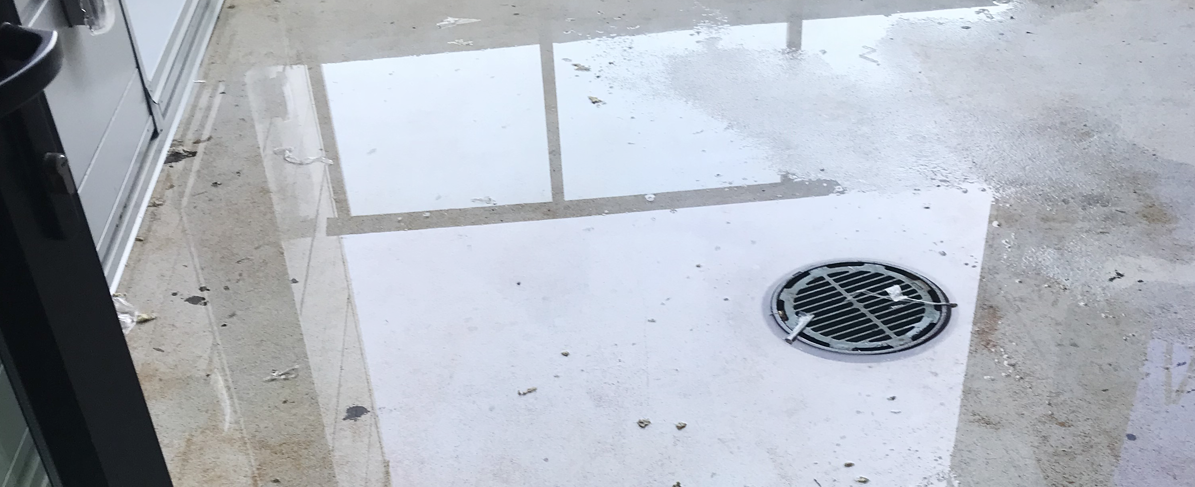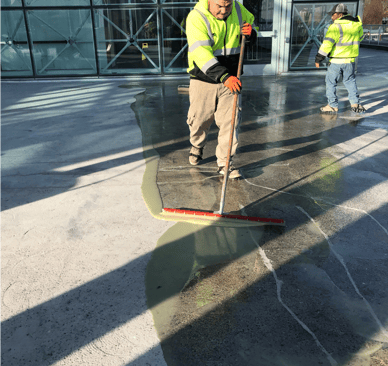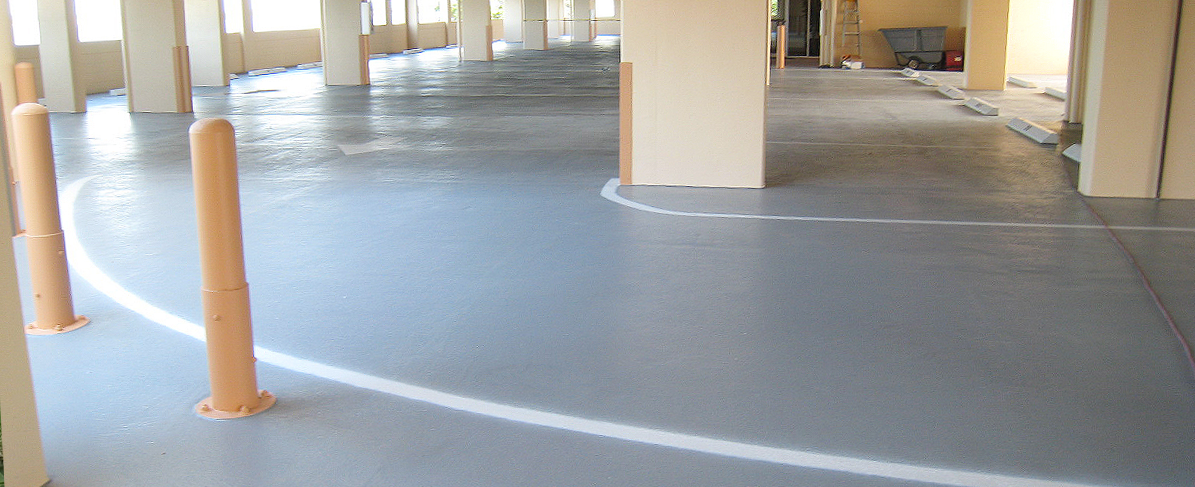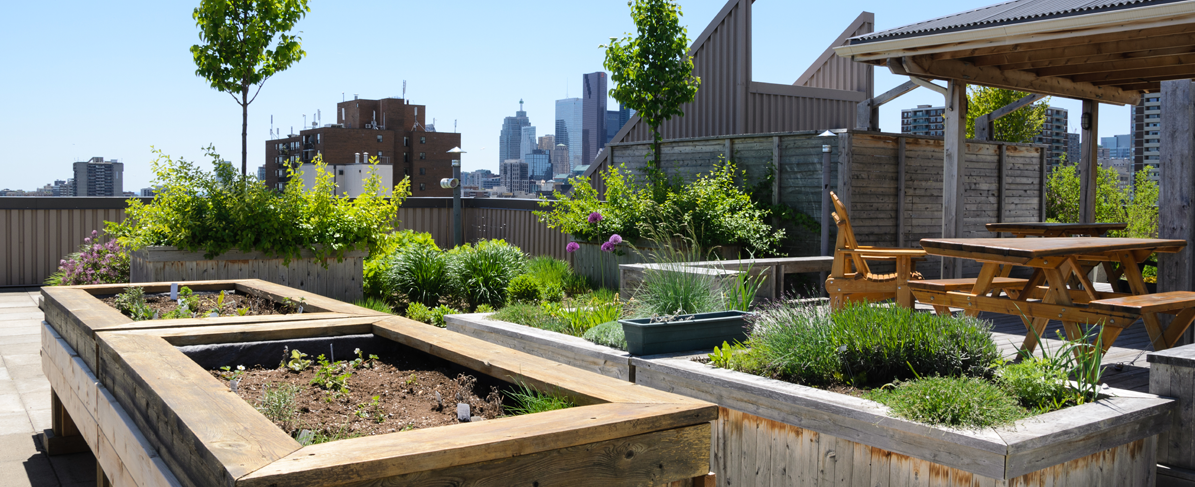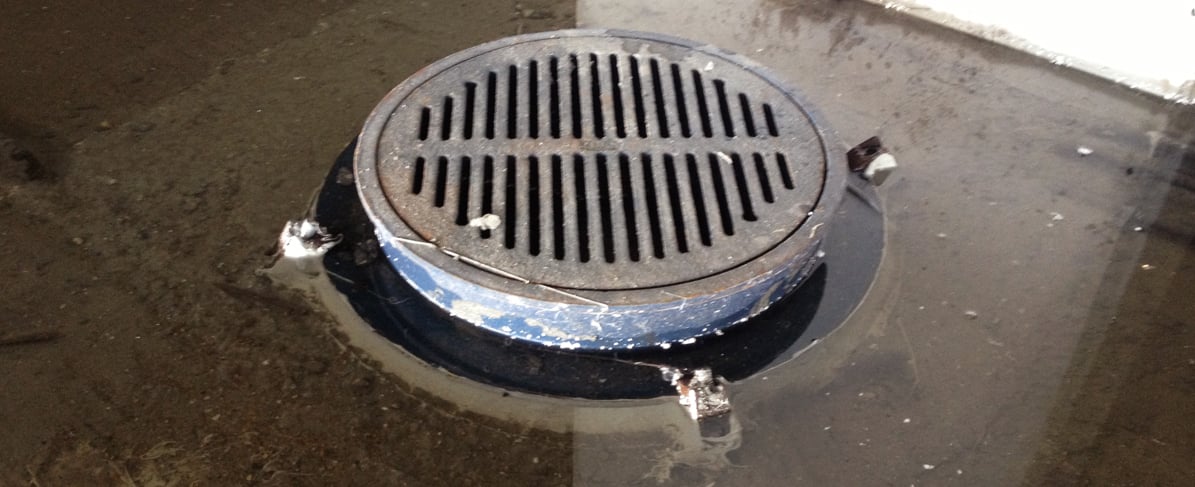Is standing water dangerous? Seeing puddles of water on concrete balconies, plaza decks, and parking garages is not uncommon and may seem harmless, but ponding water is actually indicative of a larger problem. Keep reading for your guide to eliminating ponding water and potential waterproofing or structural damage to your building.
What is Ponding Water? 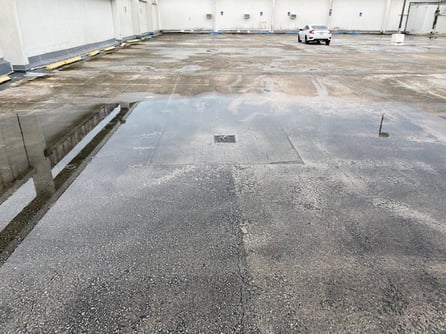
Inadequate drainage and improper sloping of the deck material can lead to ponding water and the deterioration of the concrete surface and/or waterproofing membrane. This erosion can then cause leaks and damage to the structure itself, as well as any property on the levels below. Therefore, remediating ponding water is an essential part of ongoing building maintenance. Thankfully, it is usually easy to notice this excess moisture before it escalates to a larger issue.
On concrete surfaces, there is typically visible water or discolored concrete from the water saturation. Paver decks, on the other hand, may hide the water. To recognize ponding water with pavers, look for algae or mold growth and efflorescence, which can be identified by white streaks or stains on the surface.
Common causes
Here are some common issues that may lead to ponding water:
- Clogged drains from debris such as leaves or trash
- Scuppers and/or drains were set too high and were not installed flush or slightly recessed to the surface.
- The concrete and/or coating system was improperly sloped.
Repair Methods
Before proceeding with any deck repairs, make sure to check for proper drainage, as clogs and inadequate drainage account for a large portion of ponding water issues. Upon confirming that drainage is sufficient, if ponding water remains a problem, then you should review the repair methods below for a repitch.
Repitch With Bare Concrete 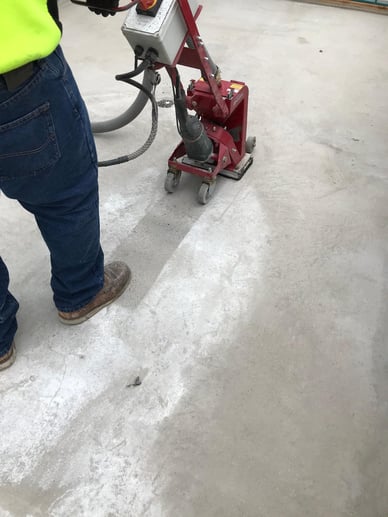
If your substrate is bare concrete, you may opt to level out smaller areas using a concrete repair mortar. For larger areas, or if you wish to also apply waterproofing protection, you will need to select a waterproofing system. In this latter application, you will first need to scarify the concrete to the proper concrete surface profile (CSP) according to the application instructions of the waterproofing system chosen to repitch the deck. After scarifying, clean the area and blow with a blower. At this point, it is recommended that a contractor or engineer find the correct pitch and direction of the concrete slope. This is usually a 2% slope or ¼ in (6 mm) per 1 ft. (30.5 cm). After the pitch and direction are determined, use a level and mark on the vertical wall the height at which the waterproofing membrane should be applied so the pitch is correct. Then, install the waterproofing system according to the manufacturer’s instructions, making sure to follow the guide marks on the wall. Give the waterproofing system time to cure properly before allowing traffic through the area.
Repitch With Existing Waterproofing Membrane
Before tackling the repair of a surface that has an existing waterproofing membrane, determine the scope of work requiring a repitch. Smaller areas may be patched, but larger areas may require that the existing membrane is removed down to bare concrete.
If this is the case, mechanically remove the membrane and scarify the concrete to the proper concrete surface profile (CSP). Then clean the surface, removing any debris and allowing the surface to dry. If you only require a coating over the existing membrane, first pressure wash or shotblast the surface, remove any debris, and allow the surface to dry.
From there, use a flexible, urethane sealant to repair any cracks. Spalls can be repaired using epoxy or cementitious products depending on the damage and turnaround time desired (sand and epoxy have the fastest turnaround time). Then, remove and replace old or damaged sealants at horizontal to vertical transitions, clean and dry the surface, and apply primer, referring to product application instructions to determine what primer is needed for the substrate and following product instructions. A contractor or engineer should dictate the necessary pitch and direction, which is typically 2% slope or ¼ in (6 mm) per 1 ft (30.5 cm). Use a level and mark on the vertical wall the height at which the waterproofing membrane should be installed for proper pitch. Then, install the waterproofing system according to the manufacturer's instructions and allow to fully cure.
Conclusion
Ponding water can have many adverse effects on a property such as concrete degradation, failure of the waterproofing system, and leaks. As soon as ponding water is noticed, it is important to make the necessary repairs to a surface to avoid further damage to the structure.
